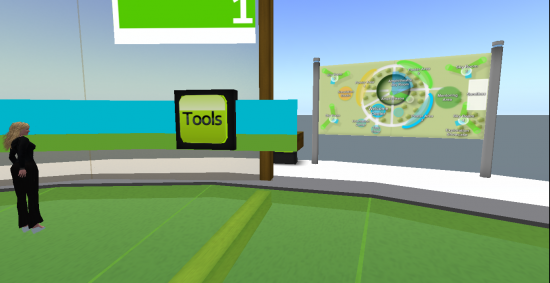The recent furor over patents by SpotON3D is understandable. However, we may be overemphasizing that issue while staying naïve about other formidable developments. Let me begin with a specific illustration.
Back in December of 2010, Hypergrid Business ran an article that indicated IBM had filed a patent on sim design methodologies (read here). To date, only three comments have been posted, ranging in tone from “Well done to IBM†to “…these are good things for us to explore.†Where was the sense of alarm and outrage that has characterized the controversy regarding SpotON3D? Are we worrying about a splinter while standing in the shadows of trees that are poised to fall?

As virtual world technologies and markets mature, they will attract the attention of major players, like IBM, and those forces have very deep pockets. According to IBM itself, they hold over 40,000 worldwide patents and more U.S. patents than any other company. They invest $5 billion per year in research, development and engineering. IBM makes very clear that these investments are for inventions, but also for licensing (source: IBM patents webpage).
Here is a partial list of patents from IBM using the search terms: abst/“virtual world†and abst/“virtual world†AND IBM: Patent No. 7,970,837 for a method to invite users to a virtual world using instant messaging; Patent No. 7,970,840 for a method to continue instant messaging exchange when exiting a virtual world; Patent No. 7,886,045 for a media playlist construction for virtual environments. Patent No. 7,882,222 for a virtual environment module bundle; Patent No. 7,843,471 for a persistent authenticating mechanism to map real world object presence into virtual world object awareness; Patent No. 7,765,478 for scheduling and reserving virtual meeting location in a calendaring application. (source: United States Patent and Trademark Office) .
IBM is not alone. Other major players with virtual world related patents include Sun Microsystems, Sony Computer Entertainment, Microsoft and Alcatel-Lucent USA Inc.
Searching patent applications with the search term abst/“virtual world†AND browser AND plugin yields 515 results. Again we see IBM, with filings such as “Managing connections between real world and virtual world communitiesâ€, “Linking virtual worlds and collaboration platforms bi-directionally using a central identity management system†and “Managing multiple virtual world accounts from a single virtual lobby interface.â€
Given the comprehensive activities of IBM especially, but others as well, the recent news from SpotON3D seems not to be an exaggerated source of challenges and concerns for the virtual world community, but rather a normal development, and an important part of a broad and deepening landscape. Nonetheless, the news about patents from SpotON3D has created a firestorm of protest, while the aforementioned patent filing by IBM regarding sim design methodologies passed by barely noticed. This reveals a lopsided perspective in how we focus and react.
In part this may be explained by considering which threats are felt to be the most immediate. The specific patent regarding sim design methodologies from IBM is applicable to content creators, while the moves by SpotON3D affect browser viewer companies, which are already investing in programming. There has been much anticipation that with browser-based viewers the appeal of virtual worlds will skyrocket, so the patent filings by SpotON3D probably seem more threatening. However, both developments have the potential to stifle innovation and shut out small startups, and should be regarded with similar concern.
Perhaps we take for granted the transparency of small companies that share in a community oriented approach to their projects. The fact that we expect direct access to the principals at SpotON3D is because they make themselves available to the community of virtual world development participants. While some took issue with a meeting scheduled with short notice, the reason given, which was to have a meeting sooner, rather than much later, was clearly an attempt to be responsive. Does anyone think IBM would schedule a community meeting on 24 hours notice to address the concerns of a handful of concerned and competitive startups?
Since there are already many patents, copyrights and trademarks in the world, all startups face the hurdle of creating products and services that are not already protected. Focusing exclusively on SpotON3D misses the broader perspective of just how competitive and controlling the world is, and just how vulnerable we are as a community that gives away so much to a technology we value. There are patent farms and abuses of the system, however, taking umbrage exclusively with SpotON3D does not set the world right. Instead, I believe the issues raised by SpotON3D are a prelude of what to expect more of in the future.
Now that we know patents are coming we have new considerations. Yet we must pay attention to the whole environment we are in, not just our nearest neighbor. Maintaining a comprehensive perspective is not just good form; it also leads to reactions that are most likely to be productive and meaningful.
- Meta’s moderation change means more bad stuff will get through - February 25, 2025
- Virtual curating frees artist - April 16, 2024
- Apple and the bane of VR gentrification - February 3, 2024
